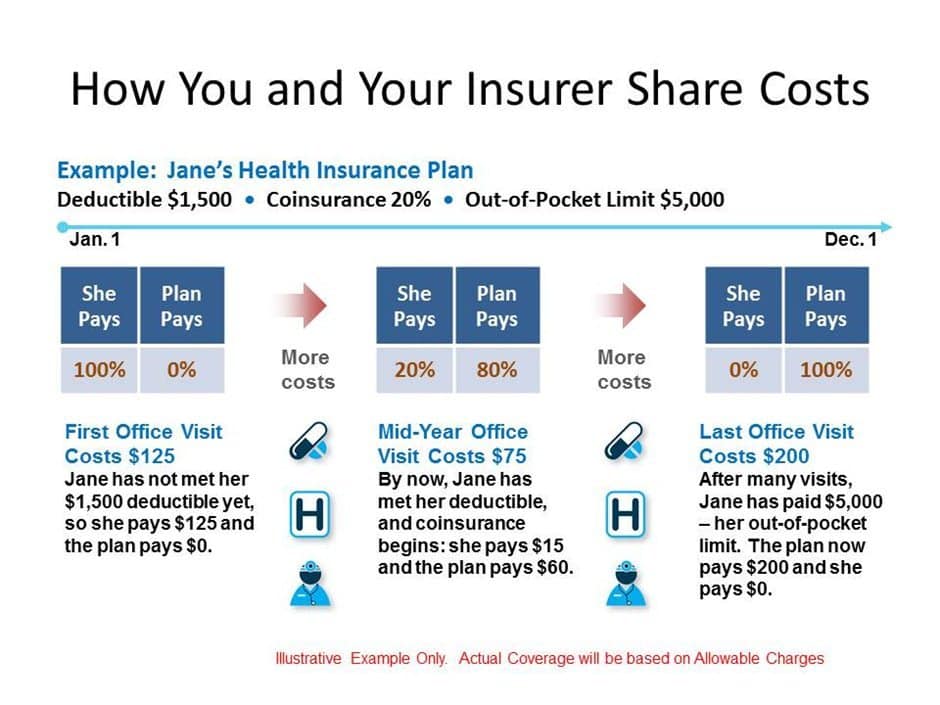

Deductible vs premium vs copay full#
In some cases, you may be responsible for the full cost of your medicine until you meet your deductible. Generics typically have lower copays than brand name drugs. You pay this amount each time you get a prescription refill.

For a prescription, your copay for “preferred”, “Tier 1”, or generic medications may be low, for example $10 or $20, and increase for non-preferred drugs that may be brand name drugs or medicines not on the health plan drug formulary.However, for preventive healthcare check-ups and preventive medicines like vaccines you should not have to make a copayment. For example, you might pay a $20 copay each time you see the doctor for a sick visit.You may have a different copay for various services, such as medications, lab tests, and visits to primary care doctors, specialists, urgent care centers or the emergency room. You may need to meet your annual deductible before you start paying copays.Ĭopays are usually determined by your health insurance. You will usually pay this at the time of your visit, or you might be billed for it. What is a copay?Ī copay (copayment) is a set amount that you pay for a service or product, such as a doctor visit or a medication. Jump to the Health Care Insurance Glossary below for a quick explanation of relevant terms. These dollar amounts have a wide range but may go up to thousands of dollars per year based on your specific health plan. Coinsurance is when you and your plan both share a percentage of the cost of a service that adds up to 100 percent.įor more information on common health care terms, use this helpful glossary.Copays, coinsurance and deductibles are terms that apply to the cost-sharing that many Americans pay as part of their medical insurance plans. For example, if a medical service has a 20 percent coinsurance, you would pay 20 percent of the cost and your plan would pay the other 80 percent. What is coinsurance?Ĭoinsurance is when you pay a percentage of the cost for an item or service. If your plan had a $0 prescription drug deductible, your plan would help pay for your prescription drug costs without you having to pay a certain amount first. For example, if your plan had a $200 prescription drug deductible, you would pay the first $200 of your prescription drug costs before your plan helps to pay. There could be a deductible on medical services or on prescription drug services, but not all plans have a deductible. What is a deductible?Ī deductible is the amount you pay for a service before the plan shares the cost of the service with you.

Your plan may have a $0 copay for seeing your doctor, for example, in which case you would not have to pay a copay each time you visit your doctor. You may not always have a copay, however. Copays cover your cost of a doctor’s visit or medication. What is a copay?Ī copay is a fixed amount you pay for a health service, seeing your doctor, or filling a prescription. All three are different types of cost sharing, which is the portion you pay for a medical service or prescription drug.

The most common types are copays, deductibles, and coinsurance. But when it comes to payment types, it’s helpful to know the meaning of the different terms so you know what form of payment is required.


 0 kommentar(er)
0 kommentar(er)
